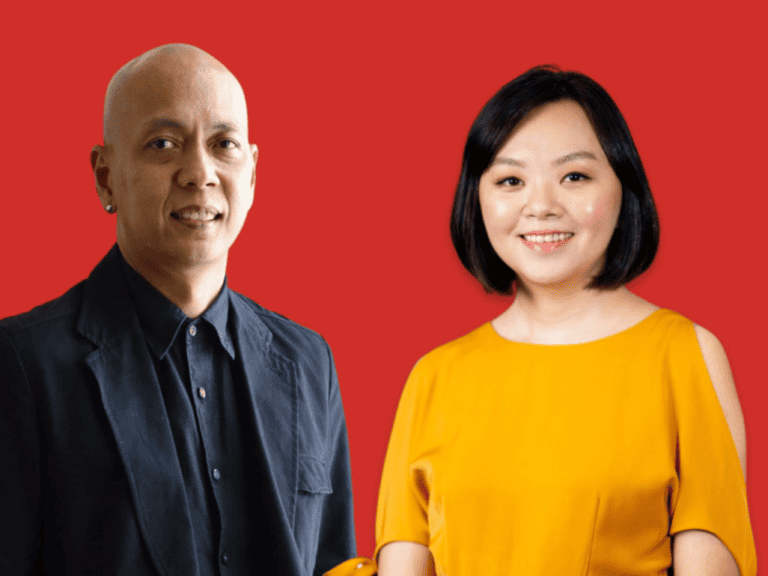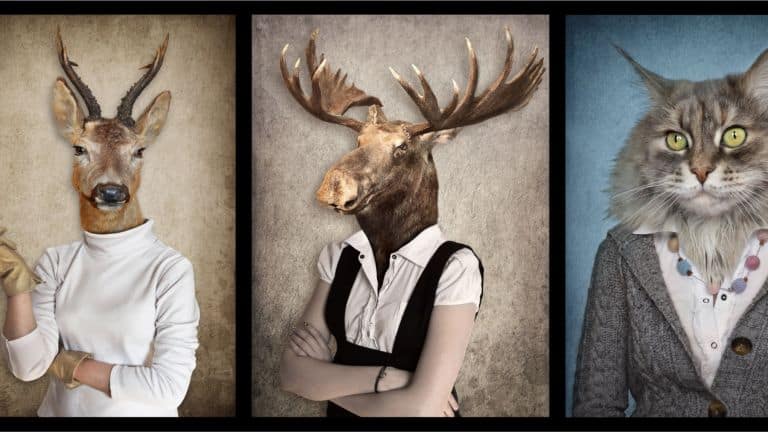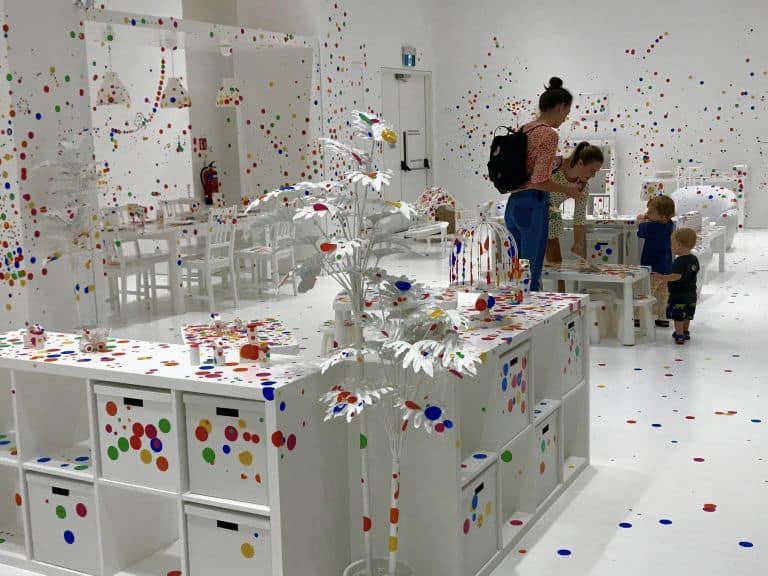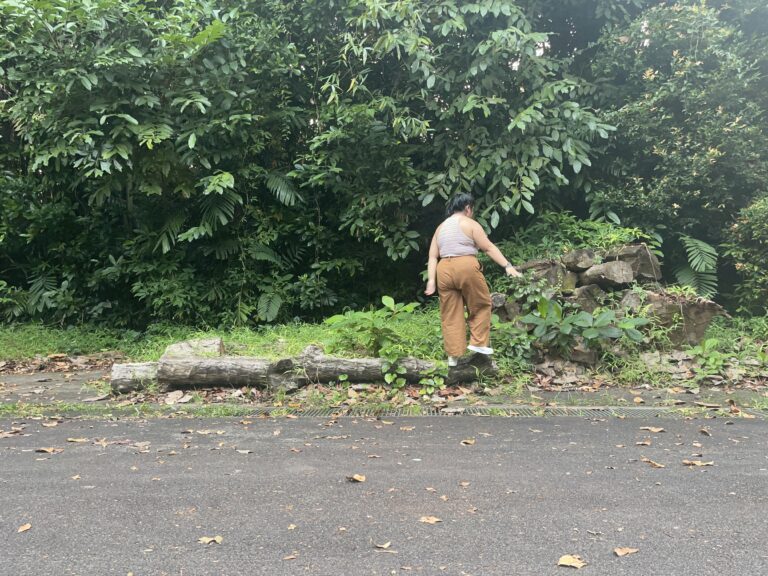documenta fifteen (d15) has unfolded over the course of a hundred days and as we enter into its closing weekend, we’ve attempted to process the things that we’ve seen and experienced in Kassel, as well as the event’s evolution over this period.
With Indonesian collective ruangrupa at the helm of the artistic direction, d15 departed from past editions in its decentralised curatorial approach based on the ideas of lumbung.
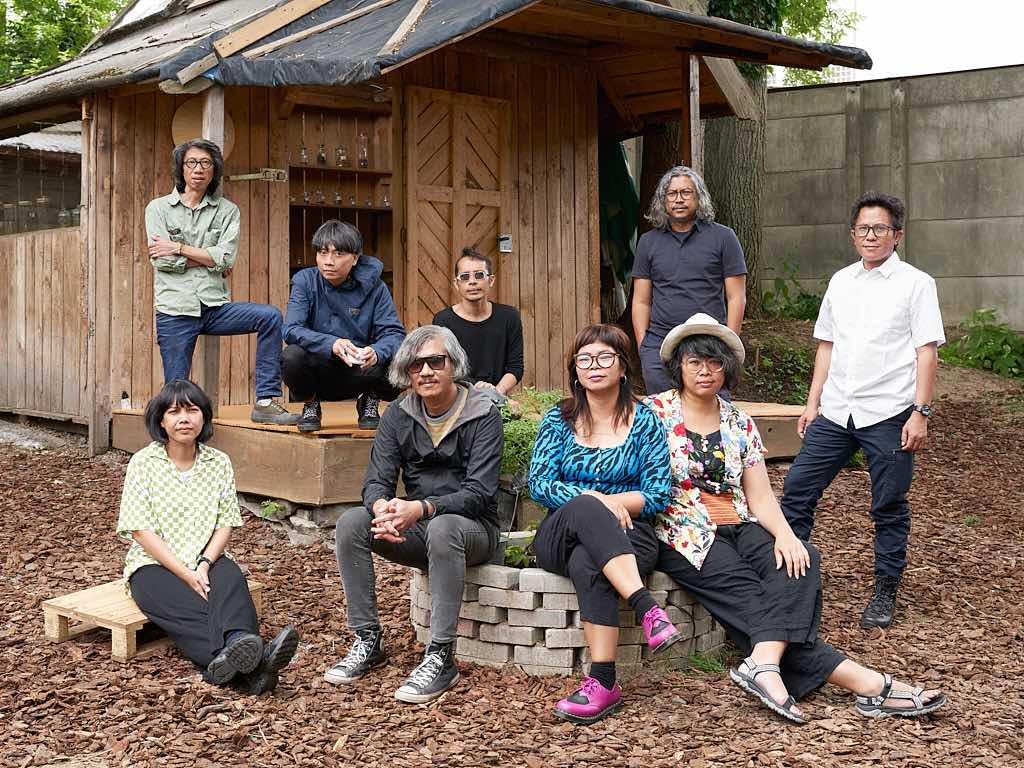
Lumbung is the Indonesian word for a communal rice-barn, where surplus harvest is stored for the benefit of the community. These same principles of collectivity, resource-building and equitable distribution shaped ruangrupa’s curatorial approach. In its application of the principles associated with lumbung, ruangrupa extended invitations to fourteen more community-oriented collectives and organisations (known as lumbung members) to contribute to d15. These lumbung members expanded the network further by inviting even more artists (known as lumbung artists) to participate. Together, they made up the lumbung community. As New York Times reviewer Siddhartha Mitter remarked: “No one knows just how big Documenta 15 is…How many artists? Hard to say…How many artworks? Also elusive.”
What has happened and how has d15 unfolded over the hundred days in Kassel?
A lot.
Elusive, hard-to-define artworks, as it turned out, were the very least of its challenges.
Where is the art?
But let’s start first with the elusive art.
In the conventional context of an international mega art event, d15 was hard to define. It was never meant to be a finished product by the time it opened to the public on June 18. If you’d assumed that the artworks on show would be complete, polished objects expertly presented as one would expect from a typical biennale staging you’d be sorely disappointed. Yet, it was difficult to shake off these expectations, conditioned as we were by the ‘mega international art event’ model.
d15 itself displayed the trappings of a global art event, with its ticketing structure, merchandise for sale, international marketing campaign and corporate sponsors. It was therefore difficult to make a psychological break from the ‘biennale mindset’. The result was a discrepancy between audience expectations and the actual d15 experience, engendering confusion and exasperation in viewers who asked the frustrated question: where is the art?
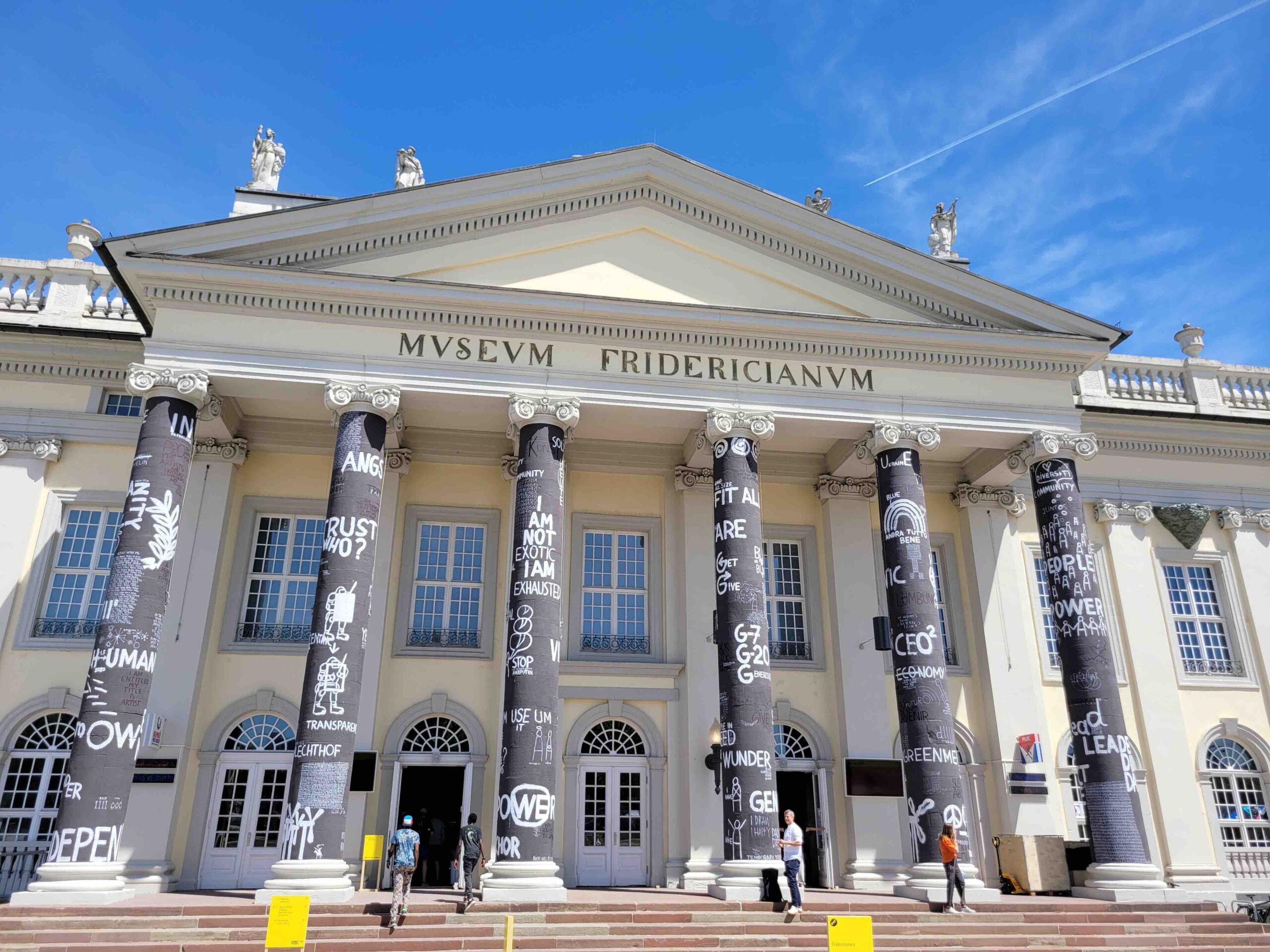
The Fridericianum was fitted out to resemble a studio/workshop, with charts, scribbles and drawings on the walls. At the centre of the room was a separate space presenting works by a different collective every day.
Stripped bare of its ‘object’ status, the art at d15 was broken down to its processes and behind-the-scenes expositions, showcasing models of approaches and questioning any stable definition of “art”. In the preparatory stages of d15, lumbung members and artists themselves started a working group addressing the question “Where is the art?”
Here discussions shifted away from the usual definitions, rooting art instead in the social, economic and activist practices of the artists themselves.
That art is part of life is a key tenet of d15’s artistic direction and derived from an Indonesian approach where art is not separate from life.
While collectives and activists were invited from all over the world, it was also necessary to latch their programs and activities to the concept of “art” at one of the world’s most prestigious platforms. Indeed, one could read the entirety of d15 as a curatorial strategy in itself, with the ambition of giving “art” a new definition. It was a discursive approach characteristic of the critical methodology of newness and avant-gardism, one which extended from a largely Global North discourse of “socially-engaged art”.
If one must hark back to the art world, perhaps d15 itself, as a whole, could be thought of as a single artwork. When considered against the more typical characteristics of mega art events as mentioned above, one could not help but regard the presentations that were more pictorial, physical, filmic, aesthetic, performative, or which contained art historical references in them, as “artwork” in the more familiar sense of the word.
One example was Saodat Ismailova’s chilltan, a work inspired by Central Asian lore in which ‘chilltan’ are shapeshifters that take the form of young or elderly women; animals, such as snakes, birds, or tigers; animate or inanimate parts of nature; and even natural phenomena like wind or clouds.
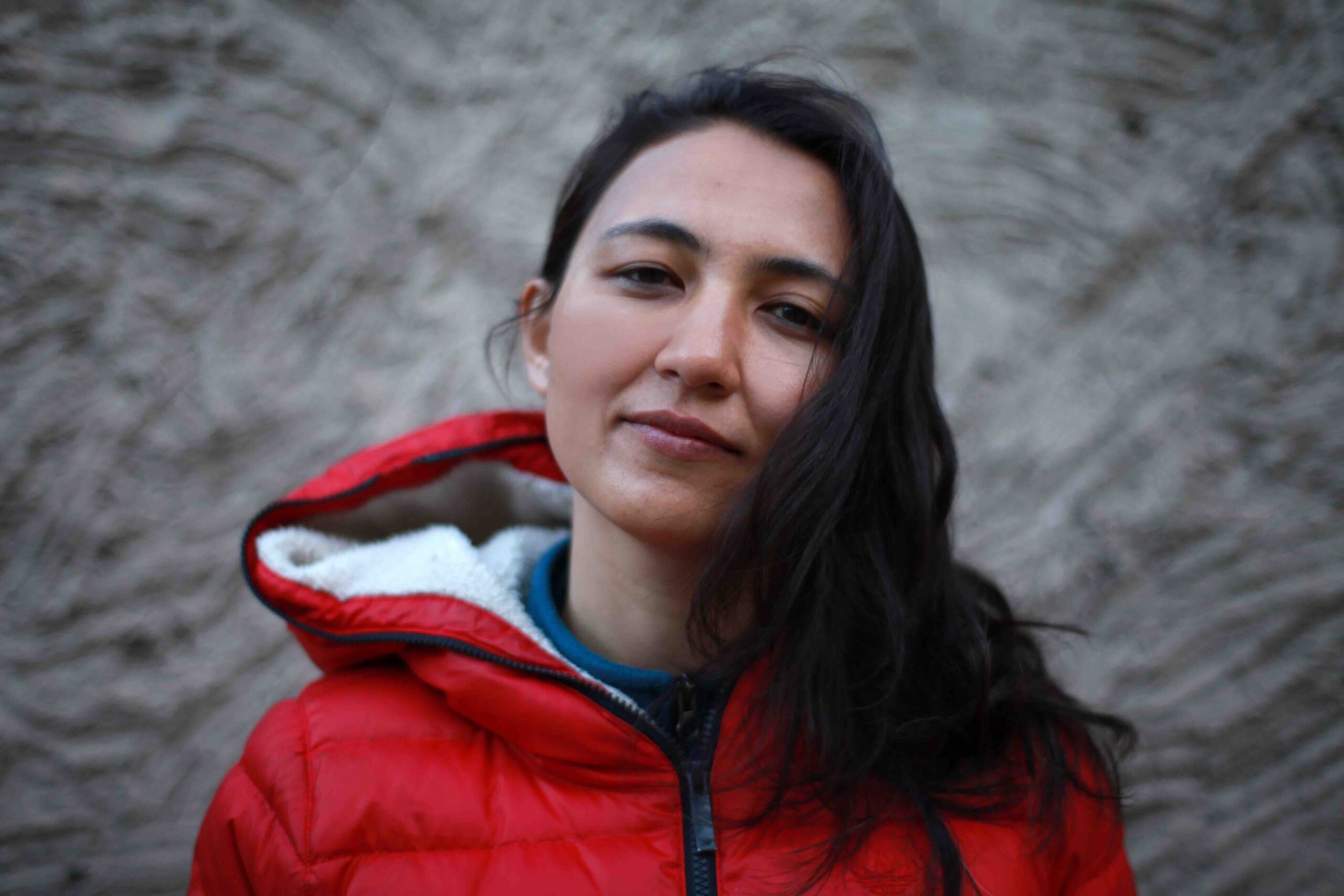
A work like hers which combines the aesthetic qualities of film and performance with cultural history could be contrasted against the abundance of charts, texts and illustrations presented as artworks at the Hafenstrasse 76 venue. Perceived to be more akin to communications infographics and instruction manuals than artwork, they were hard to differentiate from the wall texts which accompanied them. One such puzzling text banner claiming, “My biography seems more interesting than my art,” was a work by the *foundationClass* collective:
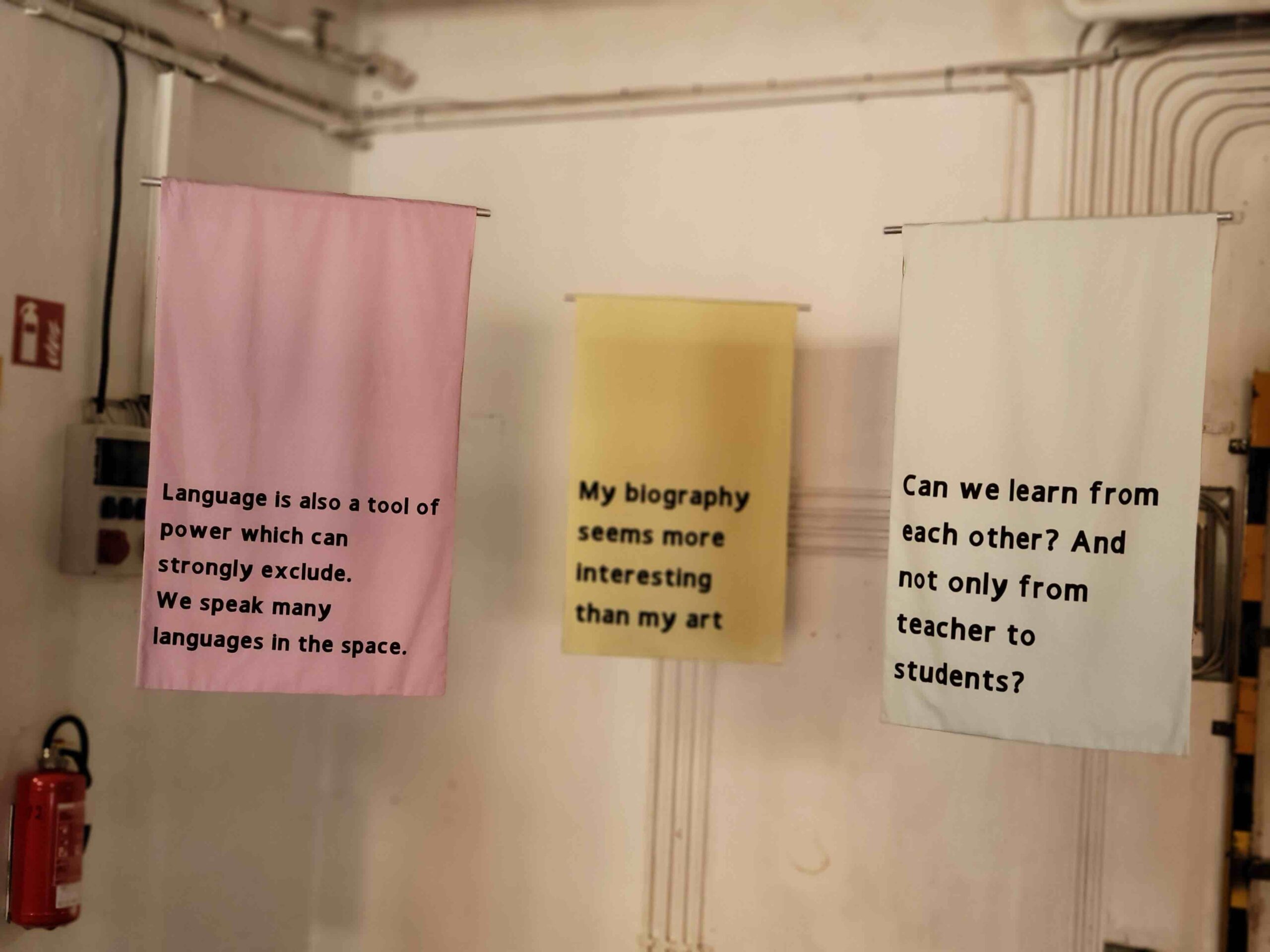
There are of course two ways of reading an artwork like this: first, that positionality is important and secondly, that a work always has to be read in context, or in other words, there is no art as such beyond the artist’s own personal history or biography. We found the latter concept to be useful in interpreting the bulk of the texts and graphs in d15, giving the event a PowerPoint-like, almost DIY feel.
Navigating Contexts
Even before d15 opened, there was already trouble looming on the horizon.
In January 2022, ruangrupa faced accusations of antisemitism, initially from a handful of German media outlets, for having included The Question of Funding (QoF), a collective of cultural producers and community organisers from Palestine whose aims are to rethink the economy of funding and how it affects cultural production both in Palestine and the world.
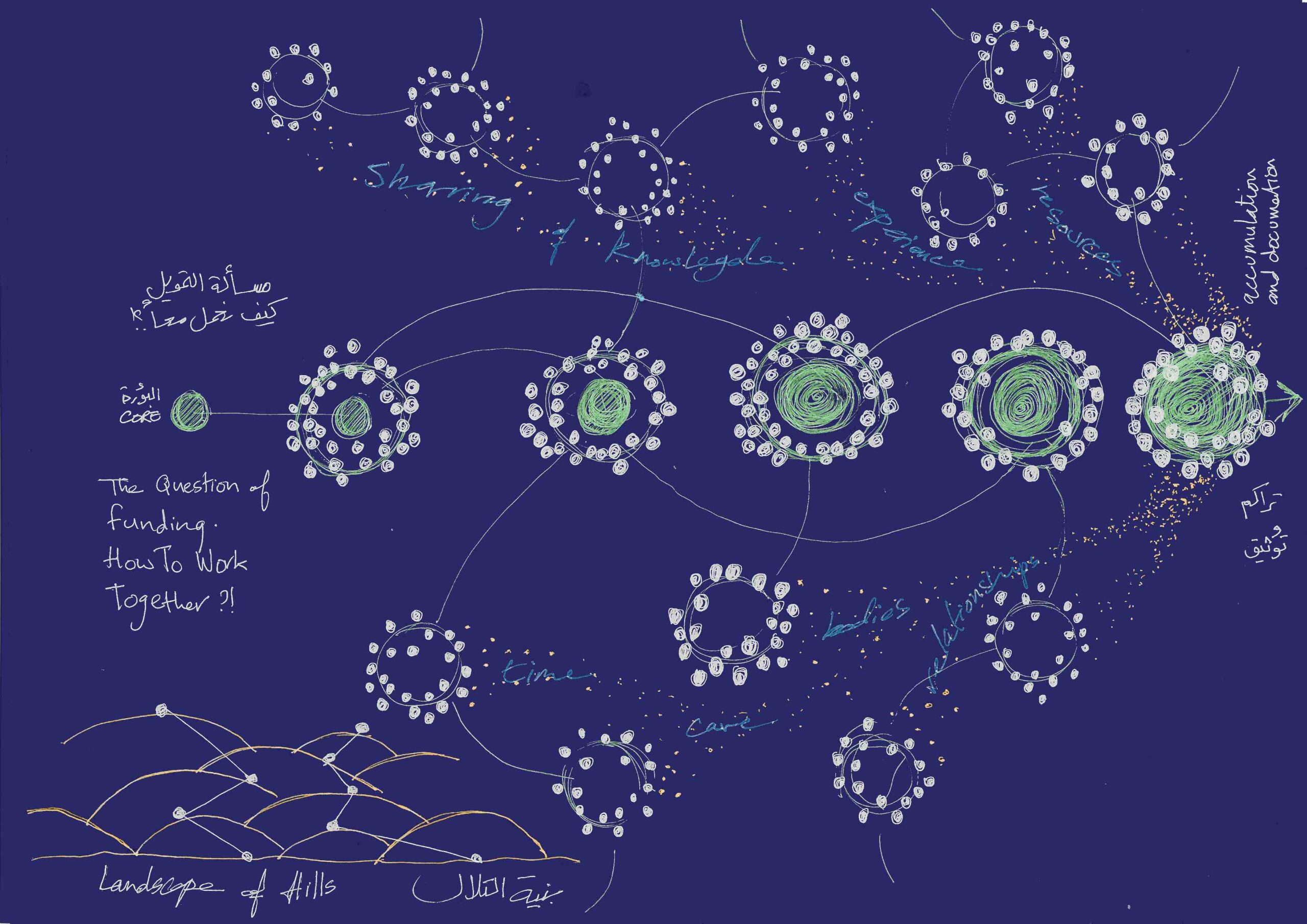
The accusations stemmed from the positions of certain members of the collective on the international BDS (Boycott, Divestment, Sanctions) movement, one which is deemed as antisemitic in Germany.
Despite this initial setback, d15 officially opened in June to much fanfare. The art world converged upon Kassel to partake of the quinquennial that has traditionally wielded considerable influence, setting the stage for what would be new directions in contemporary art. This year, the expectations were even greater given that the show’s artistic direction had been handed over to ruangrupa, a horizontal collective from Indonesia. It was a passing-of-the-torch moment of sorts, twenty years after the appointment of Okwui Enwezor as artistic director in 2002. For only the second time in its history, documenta was being led by a non-European and for the first time ever, the curatorial reigns were in the hands of a collective rather than a single curator.
Expectations ran high and the mood on opening day was festive.
Kassel teemed with artists who were there not only to install their works and participate in the opening week, but also to be part of the evolution of their works over the course of the next one hundred days. Visitors, armed with their two- or three-day passes, were energised and ready to encounter contemporary art like they’d never seen before.
Then, suddenly, d15 and ruangrupa took another hit. A few days after the opening, People’s Justice, a 2002 work by Indonesian collective Taring Padi, which had been installed at Friedrichsplatz, was discovered to have included antisemitic tropes. The work was at first covered up and then taken down altogether. It was a political maelstrom that proved to be much more difficult to navigate, threatening not only the curatorial premise of d15 but also the very existence of documenta itself, claiming among its early victims, Dr Sabine Schormann, the event’s Director General who resigned as a result of the controversy.
In an initial statement published on the d15 website following the incident, Taring Padi said, “The banner was exhibited for the first time in the South Australia Art Festival in Adelaide in 2002. Since then, the banner has been exhibited in many different places and contexts….The display of People’s Justice in Friedrichsplatz is the first presentation of the banner in a European and German context. It is not meant to be related in any way to antisemitism. We are saddened that details in this banner are understood differently from its original purpose. We apologize for the hurt caused in this context.”
This was followed up by another apology upon the dismantling of the work: “We have learned from our mistake, and recognise now that our imagery has taken on a specific meaning in the historic context of Germany.”
Context, of course, cuts many ways.
Given the context of Germany’s history and politics, the clearly antisemitic caricatures in the work understandably gave rise to German anger leading to calls for all works in d15 to be vetted by an advisory panel. While the antisemitic imagery in People’s Justice was unacceptable and should be unreservedly condemned, the reading of the Taring Padi work also needs to be done in the larger context of Indonesian history–that of its colonial past, Suharto’s military dictatorship and the genocide which took place in 1965 during which more than 500,000 people were murdered.
As written in this Art in America article, different historical contexts provide a perspective on what historian Michael Rothberg terms “multidirectional memory,” referring to the “different ways in which histories of extreme violence can confront each other in the public sphere.”
Rothberg explains for example that “taken as a critique of militarism, the Star of David is likely less a symbol of Jewish identity than of Israel’s aiding [of] the Suharto regime.”

Beyond the larger German historical context, the specific context of documenta’s very own history also played its part in how the controversy unravelled. In 2021, Documenta: Politics and Art, an exhibition held at the German Historical Museum in Berlin looked back at the first ten documentas and showed their political links including connections with the Nazi regime and affiliations during the Cold War.
Earlier research had revealed the Nazi connections of Werner Haftmann, one of the two documenta founders. The exhibition demonstrated how the cover-up of his Nazi past had shaped documenta’s early curatorial programme. Works by murdered Jewish or persecuted communist artists were not represented at the first documenta. Given documenta’s specific experience relating to Germany’s own Nazi past, the controversy surrounding the Taring Padi work has been further amplified.
In late July, new allegations were raised, this time concerning the works by Archives des Luttes des Femmes en Algérie (Archives of Women’s Struggles in Algeria), which is “an independent research project launched in 2019, amidst the Algerian popular uprising (the hirak), with the ambition of constituting a digital, open-access archive of the women’s movement in Algeria from the moment of independence in 1962 to the present”. The material in question was a 1988 brochure which made reference to the Israeli-Palestinian conflict and was critical of the Israeli army.
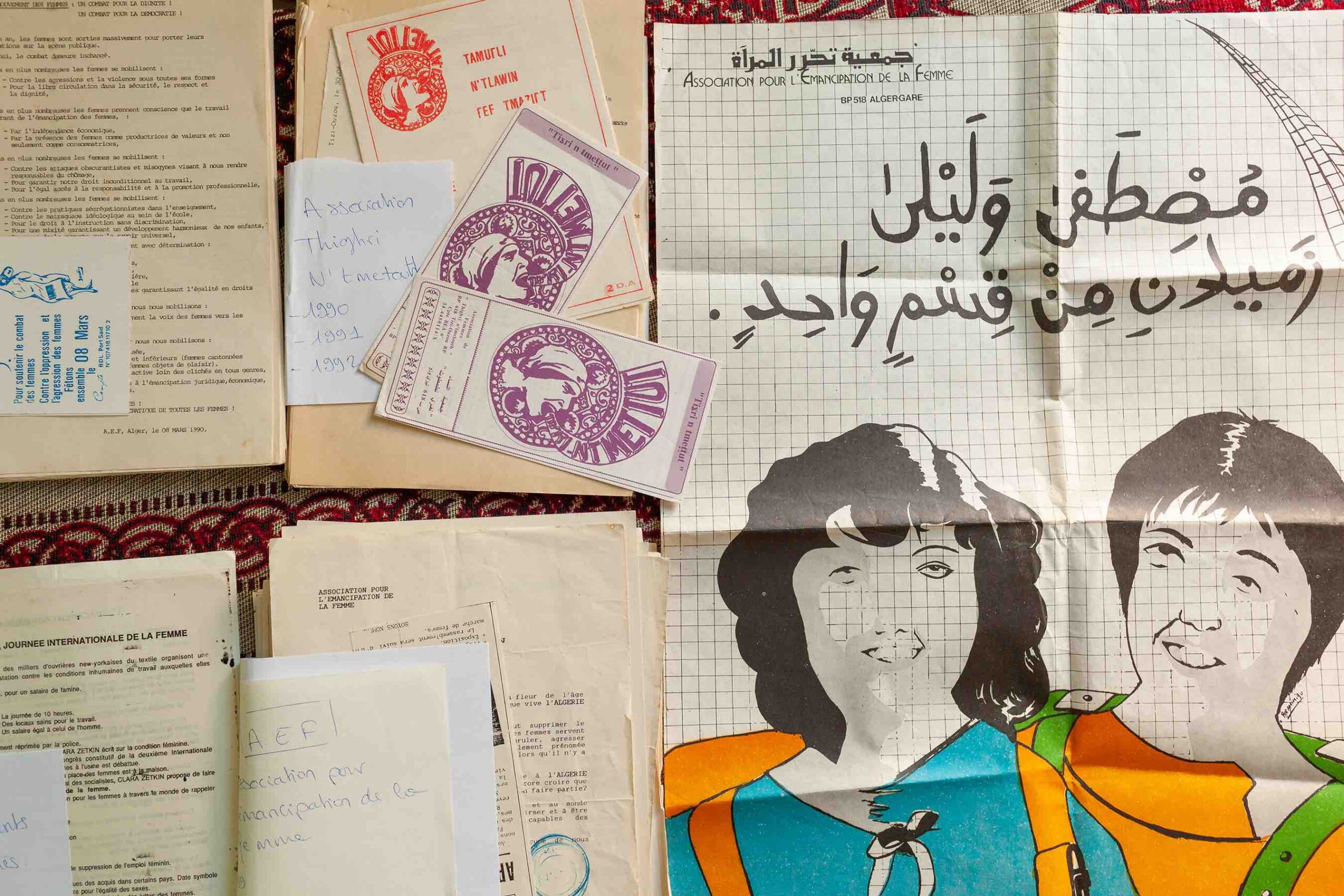
Just as d15 was in its final weeks, yet another allegation was lobbed at the lumbung community on September 10. The strangely named scientific advisory panel commissioned by the stakeholders of documenta to vet all artworks for antisemite content had released a preliminary report asking for the removal of what was deemed to be “pro-Palestinian propaganda films from the 1960s–1980s by the collective Subversive Film shown under the name Tokyo Reels Film Festival”.
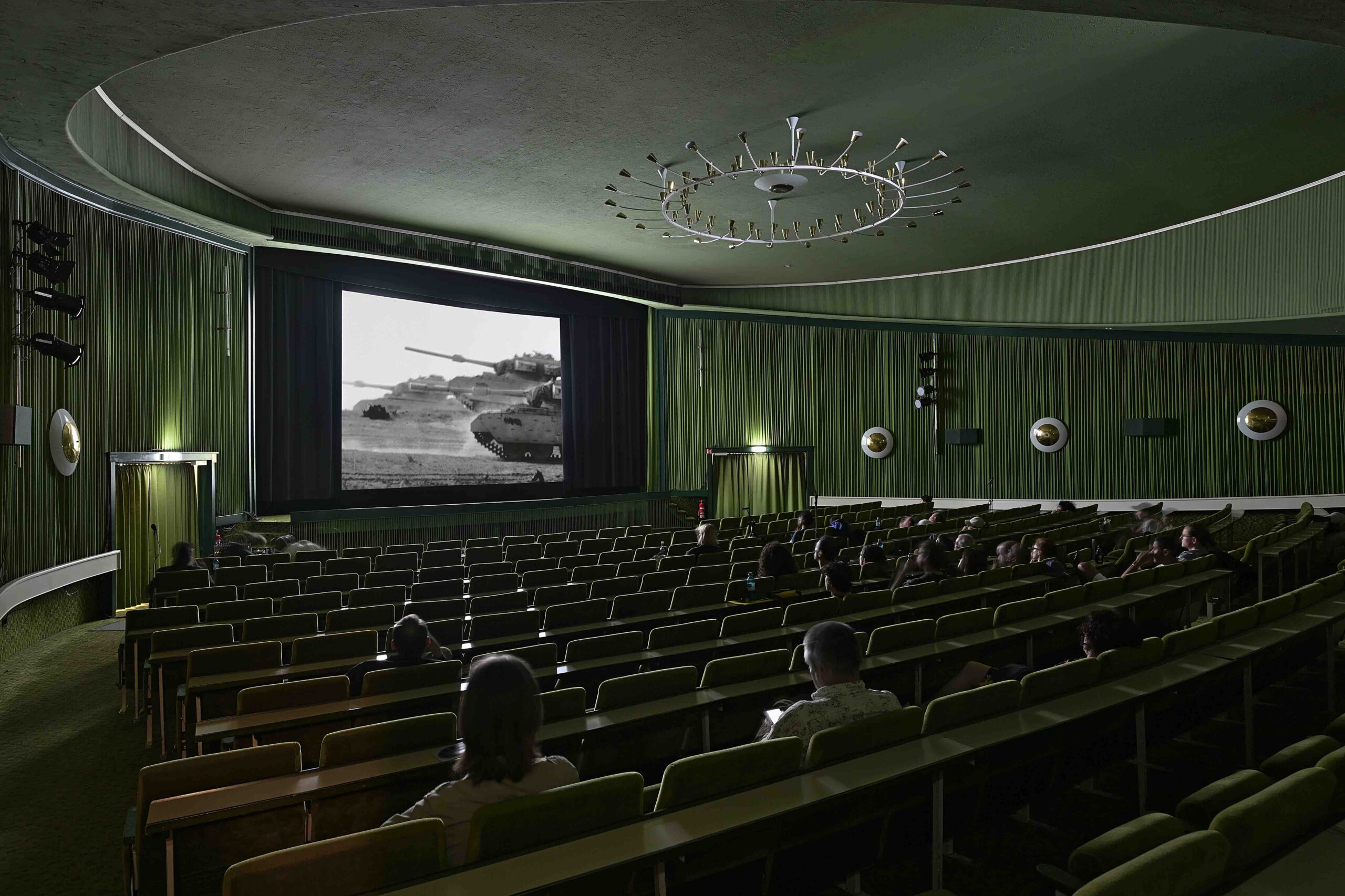
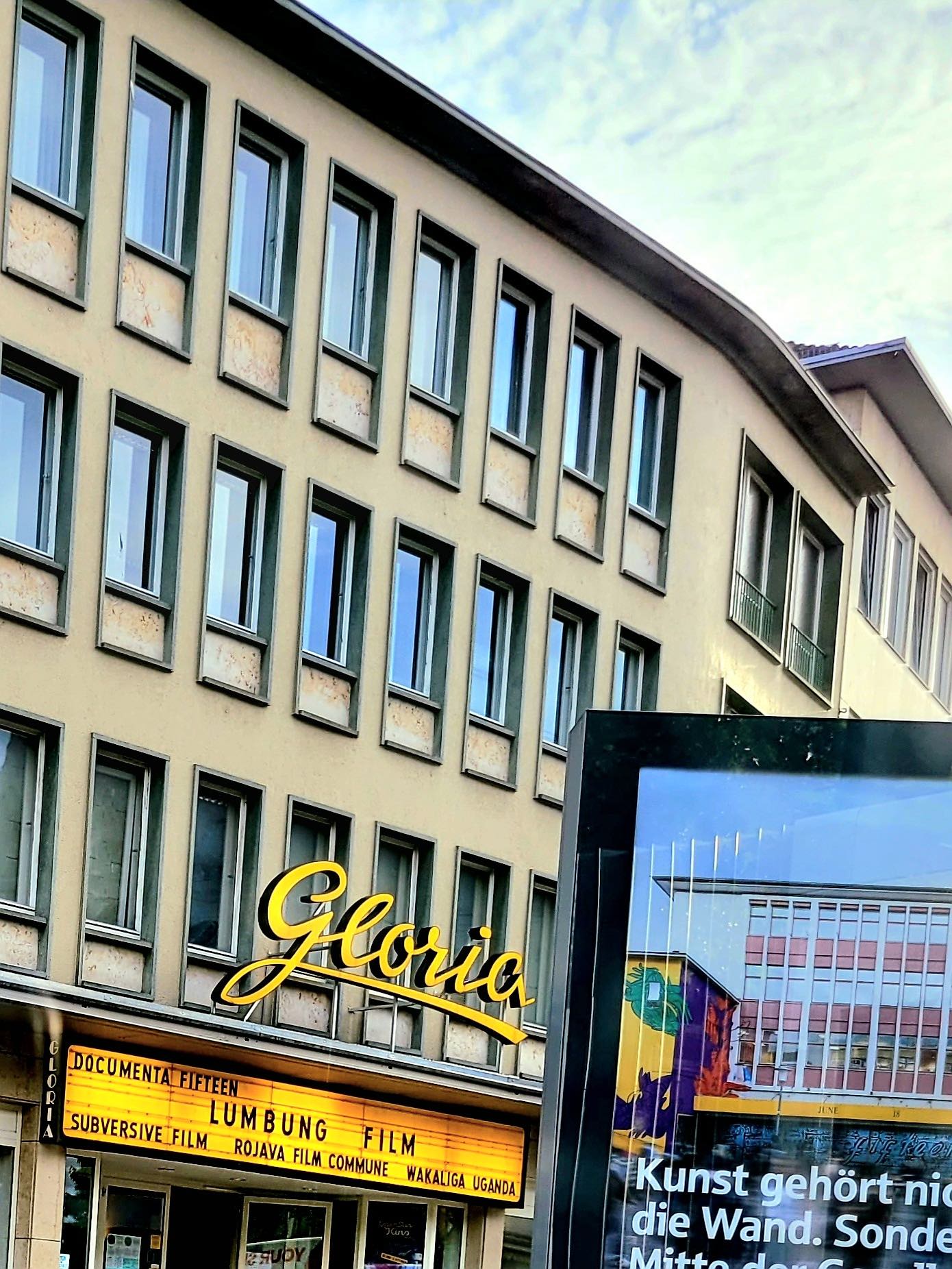
In a press release issued by the committee, “the films pose(d) a greater danger for its potential for incitement than the work People’s Justice”. The larger report further claimed that the “serious problems of documenta fifteen [did] not only consist of the presentation of isolated works with anti-Semitic imagery and anti-Semitic statements, but also in a curatorial and organisational structural environment that allow[ed] for an anti-Zionist, anti-Semitic and anti-Israel mood to prevail.”
Ruangrupa and the lumbung community swiftly responded with a statement rejecting the definition of anti-Semitism which “conflates criticism of the State of Israel and criticism of Zionism with anti-Semitism”. This was then followed by a statement from the Finding Committee for the Artistic Direction of d15 in an expression of support for ruangrupa and the lumbung community.
Responding to the latest blow to ruangrupa and d15, Japanese curator Toshiaki Hozumi commented:
“Relational art in Indonesia is different from relational art in the West. documenta fifteen appears to be largely ignored by reviewers in the West but it is well received in Japan.”
In inviting other collectives involved in their own local communities to participate, d15 offered a platform for local issues from these communities — which lie on the periphery and are often marginalised — to be aired in Kassel under an international spotlight. At d15, the local contexts of participating artists from the Global South brushed up against the German context and the ensuing friction ignited a controversy.
“Documenta was positioning themselves to be at the forefront of challenging boundaries. Yet it is so strange how one has to be ‘ready’ for these concepts and frameworks, [and] I doubt the German public was quite ready given [its] deep-seated history,” commented Sophy Tio who recently completed her graduate studies in Transcultural Studies at Heidelberg University.

Where these local contexts intersect, lie the pain points that need to be addressed together in an open, uncensored manner. As the writer Minh Nguyen asserts, the “democratisation of the public sphere occurs when conflicts are not erased but instead confronted”. In this instance, with the release of the advisory committee’s report heaping curatorial and organisational blame on ruangrupa, dialogue does not appear to be on the table and the conflicts look destined for erasure.
Not documenta fifteen, but lumbung one?
Even without the political controversies, there were already inherent incompatibilities between ruangrupa’s utopian curatorial vision as manifested in the slogan “Make friends not art” and the very structure of documenta itself as a mega art event. Add the layer of politics and d15 became a combustible, south versus north, east versus west, periphery versus centre tug-of-war.
While documenta has attempted to embark on a trajectory of greater global inclusiveness in its artistic direction (in 1997 for example, Matthew Ngui was the first Singapore artist featured in the event), d15 was confronted with a “structural” challenge of mapping the Indonesian lumbung’s social and cultural context onto a mega art event. Instead of the artworks or related pieces by the consecrated artists ending up in institutional or private collections, the material presentation in d15 conspicuously ended up being recycled. From these perspectives, d15 is no less than a revolution in the art world and cultural discourses, a productive culture clash between Southeast Asia and Europe. As stated in the introduction in the d15 handbook, “we are not in documenta fifteen, we are in lumbung one.”
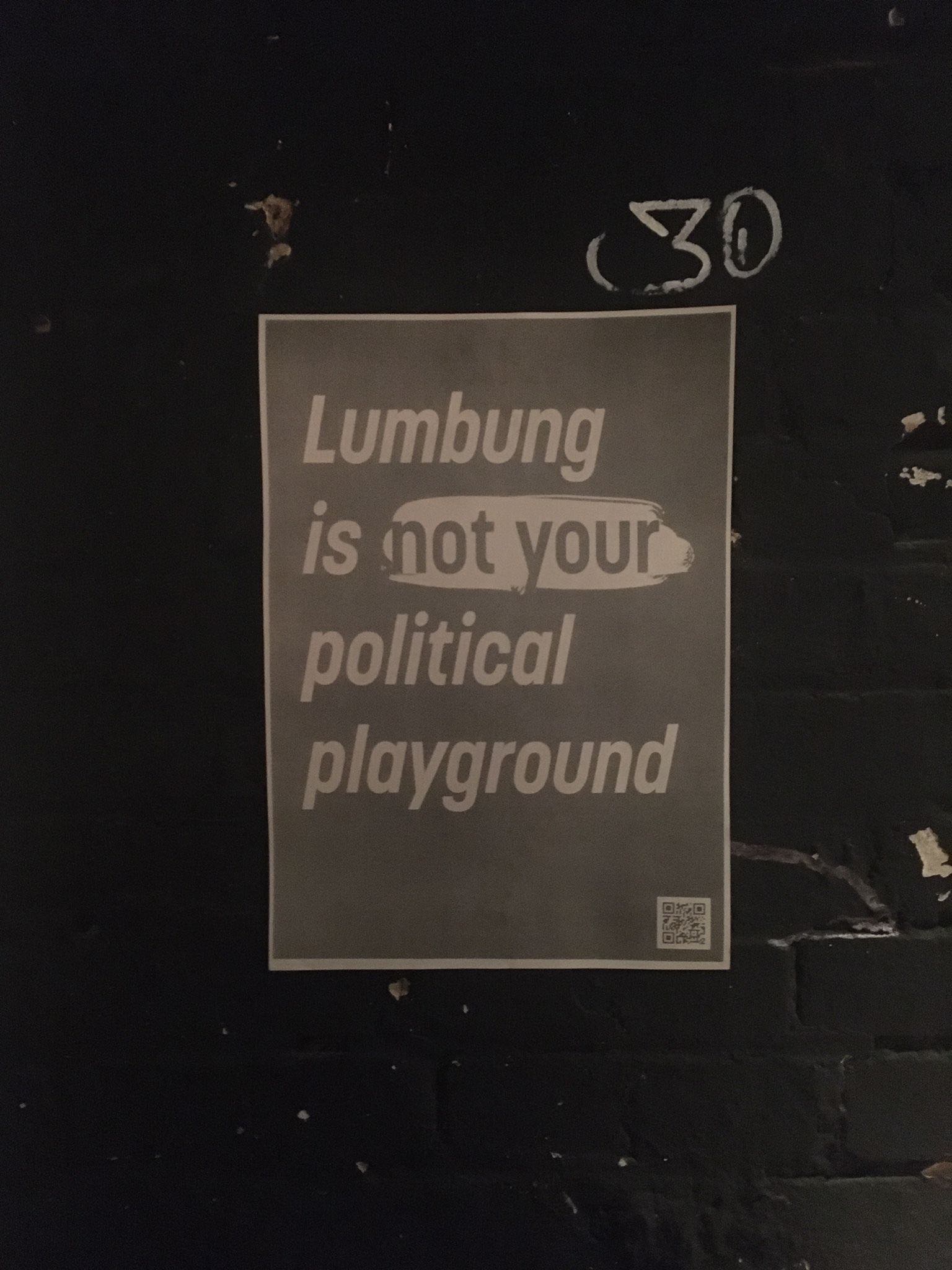
Our visits to d15 may have started out with some surprise and even disappointment given our usual expectations of biennale-type international art events, but in the three months following, these initial misgivings gave way to deeper thought. D15 highlighted questions on what art is and on how the lumbung spirit could be sustained, not only in challenging mega-scale projects, but also within art networks, circles, institutions and discourses everywhere.
As the concluding words of the lumbung community’s latest statement have it:
“The openness and the inclusivity of the lumbung is how we imagine our world to be… we will continue to practice as a way to be in solidarity, a way to be inclusive, a way for thinking, sharing, documenting, a way to fight, a way for resilience.”
While all the complicated issues of platform, resources, legacy, curatorial management and programming remain, d15 has imprinted in our imagination the ways in which we can boldly reconsider our engagement with community, culture and social equality in the arts.






